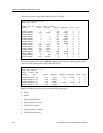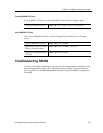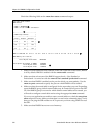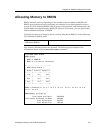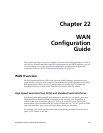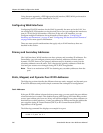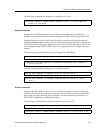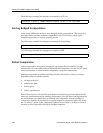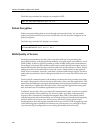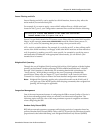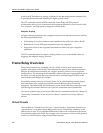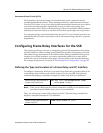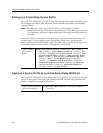
SmartSwitch Router User Reference Manual 317
Chapter 22: WAN Configuration Guide
The following command line displays an example for a VLAN:
Mapped Addresses
Mapped peer IP/IPX addresses are very similar to static addresses in that InArp is
disabled for Frame Relay and the address negotiated in IPCP/IPXCP is ignored for PPP.
Mapped addresses are most useful when you do not want to specify the peer address
using the interface create command. This would be the case if the interface is created for a
VLAN and there are many peer addresses on the VLAN. If any of the peers on the VLAN
do not support InArp or IPCP/IPXCP, then use a mapped address to configure the peer
address.
The following command lines display two examples for Frame Relay:
The following command line displays two examples for PPP:
Dynamic Addresses
If the peer IP/IPX address is unknown, you do not need to specify it when creating the
interface. When in the Frame Relay environment, the peer address will be automatically
discovered via InArp. Similarly, the peer address will be automatically discovered via
IPCP/IPXCP negotiation in a PPP environment.
The following command lines display examples for a port and a VC:
interface create ip IPWAN address-netmask 10.50.1.1/16 peer-address
10.50.1.2 vlan BLUE
frame-relay set peer-address ip-address 10.50.1.1/16 ports se.4.1.204
frame-relay set peer-address ipx-address a1b2c3d4.aa:bb:cc:dd:ee:ff
ports se.6.3.16
ppp set peer-address ip-address 10.50.1.1/16 ports se.4.1
ppp set peer-address ipx-address a1b2c3d4.aa:bb:cc:dd:ee:ff ports
se.6.3
interface create ip IPWAN address-netmask 10.50.1.1/16 port hs.3.1
interface create ip IPWAN address-netmask 10.50.1.1/16 port hs.5.2.19




